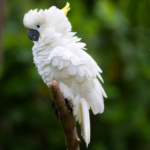Introduction to the significance of stripes in the animal kingdom
Stripes have a unique charm that captivates our attention. In the animal kingdom, they serve not just as visual allure but also as fascinating symbols of diversity. From the majestic tiger prowling through dense jungles to the playful zebra galloping across savannas, animals that have stripes come in an array of shapes and sizes. Each stripe tells a story—a tale woven into the fabric of their existence.
But why do these remarkable patterns exist? Stripes can offer insight into survival strategies, behavioral traits, and even social dynamics among species. They are more than mere decoration; they provide essential advantages in nature’s playground. Join us on this journey through stripes and discover how these patterns enhance both beauty and functionality in wildlife!
Explanation of how stripes serve as a symbol of diversity
Stripes in the animal kingdom are far more than just a fashion statement. They represent diversity in numerous ways, showcasing how species adapt to their environments. Each stripe pattern is unique, much like fingerprints.
In many cases, stripes serve vital functions for survival. Different animals develop distinct patterns that help them blend into varied habitats. This adaptation highlights the incredible variety of life on our planet.
Moreover, stripes can signify social structures within species. For instance, zebras use their striped coats to recognize one another and strengthen group cohesion. The variations seen across different species speak volumes about evolutionary paths.
These patterns also reflect cultural significance in human societies. Stripes can symbolize strength and individuality while illustrating the beauty found within diversity itself—an essential lesson learned from nature’s rich tapestry of life.
Stripes in big cats: tigers, zebras, and jaguars
Tigers are perhaps the most iconic striped animals. Their orange coats and black stripes create a striking contrast that not only captivates our imaginations but also provides excellent camouflage in their natural habitats. Each tiger has a unique stripe pattern, making them easily identifiable.
Zebras, while often thought of as horses with stripes, have a fascinating role in their herds. The black-and-white patterns aid in confusing predators and serve as social signals among themselves. Interestingly, each zebra’s stripe pattern is entirely unique—much like human fingerprints.
Jaguars add to the striped narrative with their rosettes and spots that appear almost striped at first glance. These big cats blend seamlessly into the dense forests they inhabit, using their markings to hide from both prey and threats alike.
These creatures illustrate how stripes can be so varied yet serve crucial functions for survival across different environments.
Stripes in sea creatures: fish, eels, and octopuses
Stripes are not just for land-dwelling creatures; they make a splash in the ocean too. Many fish sport vibrant stripes that serve various purposes, from attracting mates to warding off predators. The regal angelfish showcases stunning blue and yellow bands that enhance its appeal.
Eels also flaunt their own version of stripes. The moray eel’s intricate patterns provide both beauty and a means of blending into rocky crevices, where it can hide from prying eyes. Their elongated bodies allow them to move gracefully while remaining camouflaged.
Octopuses take striped fashion to another level with their ability to change color instantly. Some species display striking vertical or horizontal lines as part of their camouflage strategy or during mating displays. These mesmerizing patterns remind us how diverse life is beneath the waves, revealing nature’s incredible palette and ingenuity.
Stripes in land animals: raccoons, skunks, and bumblebees
Raccoons are known for their distinctive facial markings and striped tails. These stripes not only add to their charm but also play a crucial role in communication among raccoons. The patterns help them identify each other, especially in the dim light of night.
Skunks carry a bold black-and-white pattern that serves as both a warning and a disguise. Their striking coloration signals danger to potential predators. When threatened, they spray an offensive liquid, making it clear that approaching would be unwise.
Bumblebees exhibit stripes that have more than just aesthetic appeal. The bright yellow and black bands signal aggression to those who might want to mess with them. This visual cue helps deter predators while also drawing attention from flowers seeking pollinators.
Each of these land animals demonstrates how stripes can be functional beyond mere appearance, showcasing nature’s resourcefulness in survival strategies.
The role of stripes in camouflage and protection
Stripes play a fascinating role in the survival of many species. They can confuse predators and prey alike, creating an optical illusion that disrupts outlines. This phenomenon is especially evident in environments filled with shadows and patterns.
Take zebras, for example. Their black-and-white stripes not only help them blend into tall grasses but also create a disorienting effect when they move together as a herd. Predators often find it challenging to single out one zebra amidst the chaos.
In aquatic habitats, striped fish like clownfish use their bold colors to hide among coral reefs. The stripes mimic the patterns of light filtering through water, making them less visible to hungry hunters.
On land, creatures such as skunks utilize their striking markings as a warning signal while simultaneously benefiting from camouflage within their natural surroundings. Stripes are more than just aesthetic; they are vital tools for protection and survival across diverse ecosystems.
Conclusion on the beauty and importance
Stripes in the animal kingdom reveal a fascinating tapestry of nature’s creativity. They not only enhance beauty but also serve vital functions in survival and social interaction.
These patterns tell stories of adaptation, evolution, and diversity. From the vibrant stripes on a tiger to the bold markings on a zebra, each design is unique yet essential for its species.
Understanding these animals deepens our appreciation for biodiversity. Each stripe carries significance—whether it’s attracting mates or confusing predators.
As we explore their world, we find that stripes symbolize more than just aesthetics; they embody resilience and ingenuity within ecosystems. The presence of striped creatures reminds us of nature’s intricate balance and the importance of preservation efforts.
Every time we spot an animal adorned with stripes, we’re witnessing a remarkable blend of art and function that deserves celebration.
Conclusion
Stripes in the animal kingdom represent more than just a striking visual pattern. They embody diversity, adaptation, and survival. From the grandeur of tigers prowling through dense jungles to zebras grazing on savannas, stripes create an array of unique identities among species.
In marine environments, striped fish dance gracefully through coral reefs while eels twist and turn with elegance. Octopuses showcase their vibrant stripes as they blend into underwater landscapes. On land, raccoons wear their facial masks like badges of honor, skunks display bold warning signs with their sharp contrast patterns, and bumblebees sport their stripes as reminders of nature’s harmony.
These markings serve crucial roles in camouflage and protection against predators or rival species. Stripes can confuse, dazzle or even signal danger to potential threats. Nature’s creativity is evident in how these animals use stripes for survival.
The beauty found within these patterns speaks volumes about the richness of life on our planet. Animals that have stripes remind us not only about diversity but also about the intricate relationships between form and function across ecosystems worldwide—a testament to evolution’s artistry at work.


